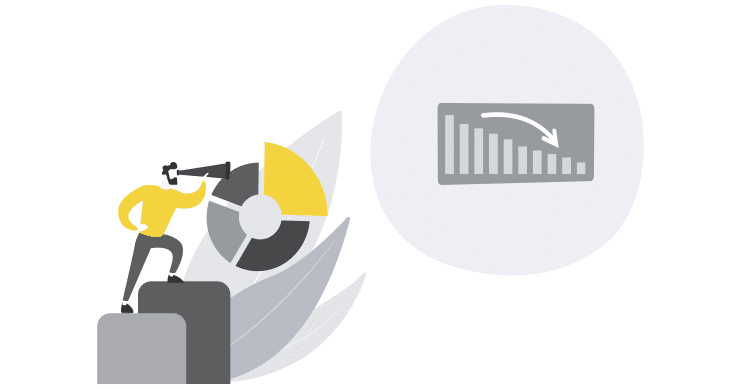What is proactive risk management?
Proactive risk management is the concept of dealing with risks before they happen and figuring out ways to avoid or eliminate risks and threats before they strike. Every organization will most likely deal with a disruptive or critical event at some point and would do well to think about this likelihood in advance of its occurrence.
Today’s organizations have to deal with rapid environmental, medical, and geopolitical changes, in addition to waves of technological advances, and increasing consumer awareness. Early models of risk management that rely on past incidents would be a bad choice for these progressive times. These factors paved the way for proactive risk management to emerge.
To achieve effective risk management today, organizations must be proactive, rather than continuously reacting to live incidents. They should use a risk-based approach to drive competitive advantage forward and sustain future growth without retracing their footsteps and patching mistakes.

Why Manage Risks in the First Place?
There are many reasons to manage risks. Here we’ve listed some good ones.
- Increase operational resilience
- Prevent potential losses
- Mitigate the effects of a disruption
- Use resources effectively
- Reduce surprises and errors
- Capitalize on risk and grab new opportunities
- Build trust in investors and stakeholders
What is the Difference Between Proactive and Reactive Risk Management?
There is a fundamental difference between reactive and proactive risk management, and the benefits of proactive risk management far outweigh any known risk management function.
Reactive risk management is response-based. This means that it’s dependent on assessing and evaluating a risk scenario post-impact. It depends on incident forensics and audit-based findings to make decisions regarding risk appetite. Proactive risk management, on the other hand, is an adaptive approach based on measurement and observation.
With proactive risk management, organizations are well-positioned to eliminate, avoid, or accept existing and emerging threats. Additionally, they are well equipped to quickly adapt to an unforeseen disruption or crisis. Viewing the future risk landscape proactively helps an organization gain visibility into risks on the horizon and measure the likelihood of impact on their business.
What exactly differentiates the two approaches to risk management?
The difference lies in the way risks are assessed, reported, mitigated, and remediated. Proactive risk assessment will determine potential risks, identify risk drivers to understand the underlying causes, assess the likelihood and impact of the risk, and prioritize it accordingly. These factors will all be considered to prepare a contingency plan. The contingency plan is set up with a target safety level to operate within. This is very different than the open-ended learning that goes on with traditional risk management.
To do so, risk managers will need to learn the skill of engaging in strategic risk utilization and creative intellect. This constitutes creatively using the positive and innovative components of their organization to combat risk.
Start Getting Value With
Centraleyes for Free
See for yourself how the Centraleyes platform exceeds anything an old GRC
system does and eliminates the need for manual processes and spreadsheets
to give you immediate value and run a full risk assessment in less than 30 days
Purpose of Reactive and Proactive Risk Management
Purpose of reactive risk management: to attempt to reduce the likelihood of a past occurrence from happening in the future.
Purpose of proactive risk management: to attempt to reduce the likelihood of any negative risk scenario from occurring in the future. This is achieved by identifying the location or situation at which a breach of that boundary can lead to a disruptive incident.
Implementing Proactive Risk Management
Proactive risk management is not a check-box process, it’s a concept that risk managers can adopt and integrate into their overall business strategy. Proactive risk management is not a quick process and is not meant to be performed in isolation. It takes time to rewire the brain of an organization to embrace a forward-thinking risk culture.
Challenges to Implementation
Challenges are bound to arise in the transition to proactive risk management. These will need to be managed before seeing the full result of preventive risk management.
Examples of Implementation Challenges
- Lack of visibility into the full spectrum of risk
- Lack of tools and processes to carry out assessments
- Siloed data
- Limited resources
- Lack of support from business leaders
Centraleyes and Proactive Risk Management Strategy
Proactive risk management helps businesses limit exposure, reduce costs, operate resiliently, and gain value. An automated platform that combines visibility into the far-flung corners of your supply chain, cloud ecosystem, and internal systems can help you achieve protection and value simultaneously. Centraleyes can equip you with the tools you need to recognize opportunities that require change and can help you better manage and benefit from risk.
Start Getting Value With
Centraleyes for Free
See for yourself how the Centraleyes platform exceeds anything an old GRC
system does and eliminates the need for manual processes and spreadsheets
to give you immediate value and run a full risk assessment in less than 30 days





